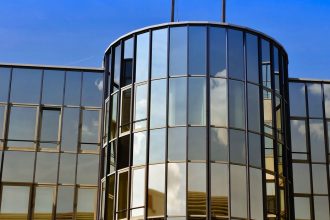Green Living: How Energy-Efficient Buildings Are Shaping Our Future
In today’s world, the conversation surrounding sustainability and environmental responsibility has never been more crucial. With climate change presenting a paramount threat to our ecosystems and quality of life, the built environment is catching up to this urgent narrative. Energy-efficient buildings and sustainable real estate development are not mere trends; they are pivotal components of a future that harmonizes human needs with the delicate networks of our planet’s ecosystems.
The Importance of Energy-Efficient Buildings
Energy-efficient buildings minimize energy consumption, reducing greenhouse gas emissions and creating a healthier environment. These structures utilize innovative design principles, materials, and technologies to ensure minimal energy waste throughout their lifecycle. The implications extend beyond reduced operational costs for homeowners and businesses; they contribute significantly to societal well-being and a sustainable future.
Key benefits of energy-efficient buildings include:
-
Reduced Environmental Impact: Buildings account for approximately 40% of global energy consumption and 33% of greenhouse gas emissions. Energy-efficient practices help mitigate these figures.
-
Economic Efficiency: Lower energy costs result in reduced utility bills for occupants. Long-term savings can be substantial when incorporating energy-efficient technologies and practices.
-
Enhanced Comfort and Health: Structures designed with better insulation, natural ventilation, and high-quality air filtration create healthier living and working conditions.
- Increased Property Value: As demand for sustainable living spaces increases, green-certified buildings often see a rise in property value and desirability in the market.
Innovative Practices in Green Building Design
Innovative practices in green building design are reshaping the landscape of real estate development. Here are several key concepts to understand:
-
Passive Design: This involves optimizing the building’s orientation and layout to enhance natural heating and cooling without relying heavily on mechanical systems. Techniques like maximizing natural light, strategically placing windows for cross-ventilation, and using thermal mass materials significantly increase energy efficiency.
-
Sustainable Materials: The choice of building materials heavily influences a structure’s environmental footprint. Sustainable practices include using recycled materials, locally sourced resources, and low-impact products that reduce environmental harm throughout their lifecycle.
-
Water Efficiency: Advanced plumbing fixtures, greywater recycling systems, and rainwater harvesting techniques reduce water consumption and minimize runoff. Green roofs and permeable paving can mitigate stormwater issues while enhancing the building’s aesthetic.
-
Renewable Energy Integration: Incorporating solar panels, wind turbines, and geothermal heating systems allows buildings to produce their energy, significantly lowering reliance on fossil fuels and raising energy self-sufficiency.
- Smart Building Technology: Installing smart meters, automated lighting, and energy management systems optimizes energy use according to occupancy levels and time of day, proving invaluable for reducing overall consumption.
Leading the Charge: The Living Building Challenge
An exemplary initiative in promoting sustainable designs is the Living Building Challenge (LBC), administered by the International Living Future Institute (ILFI). Launched in 2006, LBC is a rigorous performance-based certification program that encourages buildings to operate as self-sufficient and sustainable entities, akin to a flower.
The LBC is built on seven performance “Petals”: Place, Water, Energy, Health & Happiness, Materials, Equity, and Beauty. Each Petal encompasses specific requirements aimed at achieving social, environmental, and economic sustainability. For example:
-
Energy Pedal: Requires buildings to generate all their energy on-site from renewable sources.
- Water Petal: Mandates that buildings must capture and use all the water needed for the building’s occupancy.
One standout example is the Bullitt Center in Seattle, known as one of the greenest commercial buildings in the world. The building produces more energy than it consumes, utilizes rainwater harvesting systems, and features composting toilets, demonstrating a scalable model for sustainable real estate.
Sustainable Real Estate Development
Sustainable real estate development goes beyond merely designing individual buildings and encompasses broader ecological and social implications. It encourages eco-friendly land use, preservation of community green space, and efficient transport links, ultimately reflecting a commitment to smart growth principles.
Developers are integrating mixed-use developments that promote walkability, reduce carbon footprints, and foster community interactions. Notable trends in sustainable real estate include:
-
Community Engagement: Collaborating with local residents in the planning process to ensure developments meet community needs and preferences.
-
Green Certifications: Adopting standards set by programs like LEED (Leadership in Energy and Environmental Design) or BREEAM (Building Research Establishment Environmental Assessment Method) to benchmark progress toward sustainability goals.
- Biodiversity Enhancement: Implementing landscaping strategies that support local ecosystems, including planting native species, creating wildlife habitats, and enhancing urban green corridors.
Conclusion
The evolution of energy-efficient buildings represents a significant shift towards sustainable living that positively impacts both humanity and the planet. Programs like the Living Building Challenge highlight the possibilities of regenerative design while encouraging innovation in sustainable development.
As we look ahead, it is vital that we continue to combine technological advancements with mindful practices in construction and urban development. The path to a sustainable and energy-efficient future relies not only on the acceleration of green building practices but also on the resolve of individuals, communities, and policymakers to champion environmental stewardship. Embracing these principles will facilitate a healthier planet, a thriving economy, and a prosperous future for generations to come.
References for Further Reading:
- International Living Future Institute. (n.d.). Living Building Challenge.
- U.S. Green Building Council. (n.d.). LEED Certification.
- World Green Building Council. (2018). Bringing embodied carbon upfront – Coordinated action for the building and construction sector to deliver whole life carbon reductions.
- National Renewable Energy Laboratory. (n.d.). Building Energy Efficiency: A Guide to Best Practices.
By harnessing the knowledge of sustainable practices and supporting innovative projects, we take steps toward a more resilient and ecologically balanced future.







